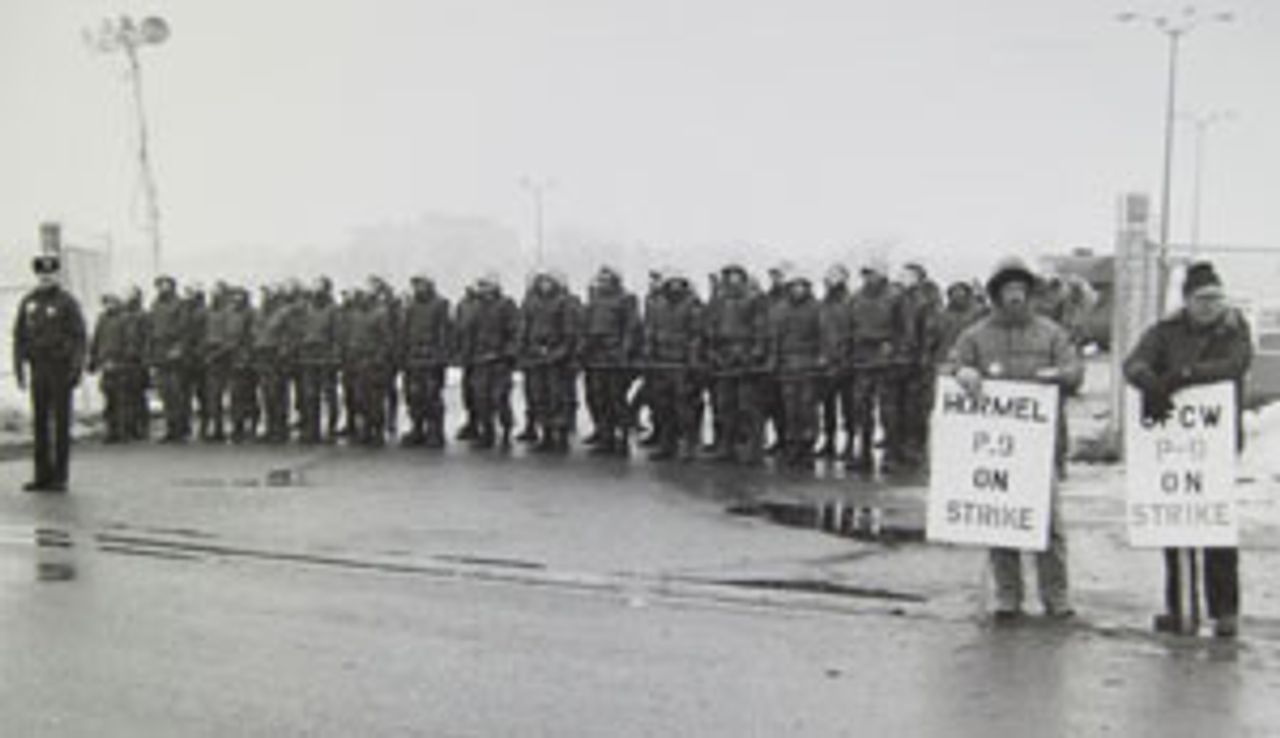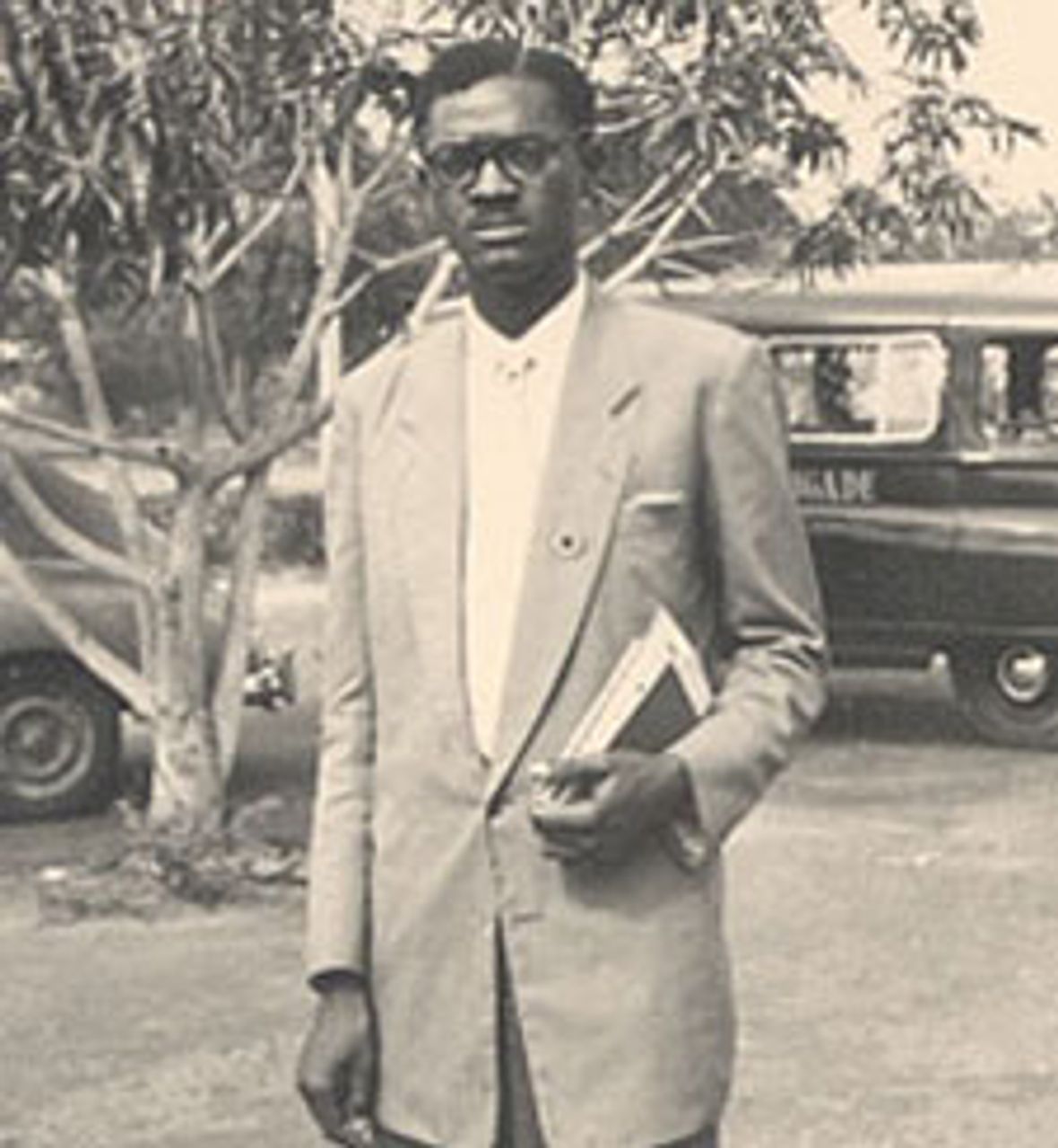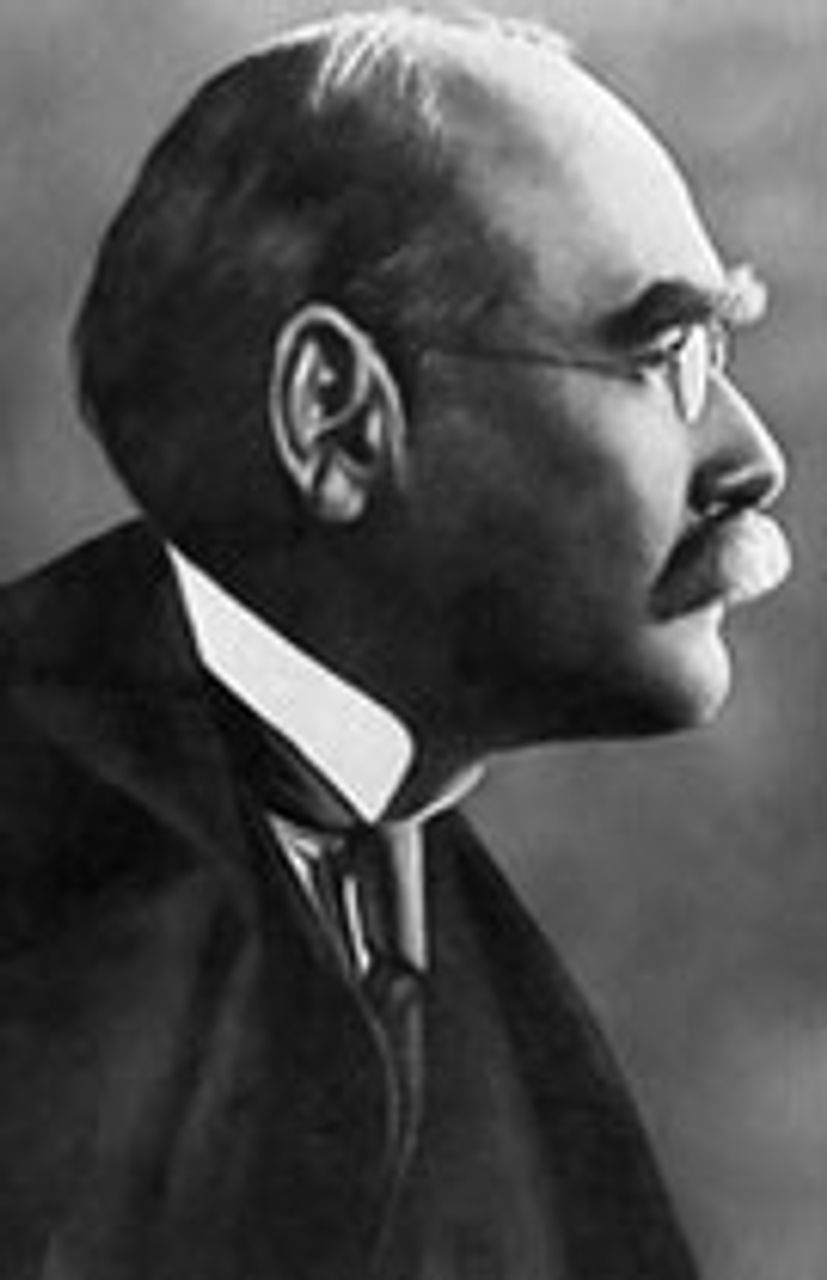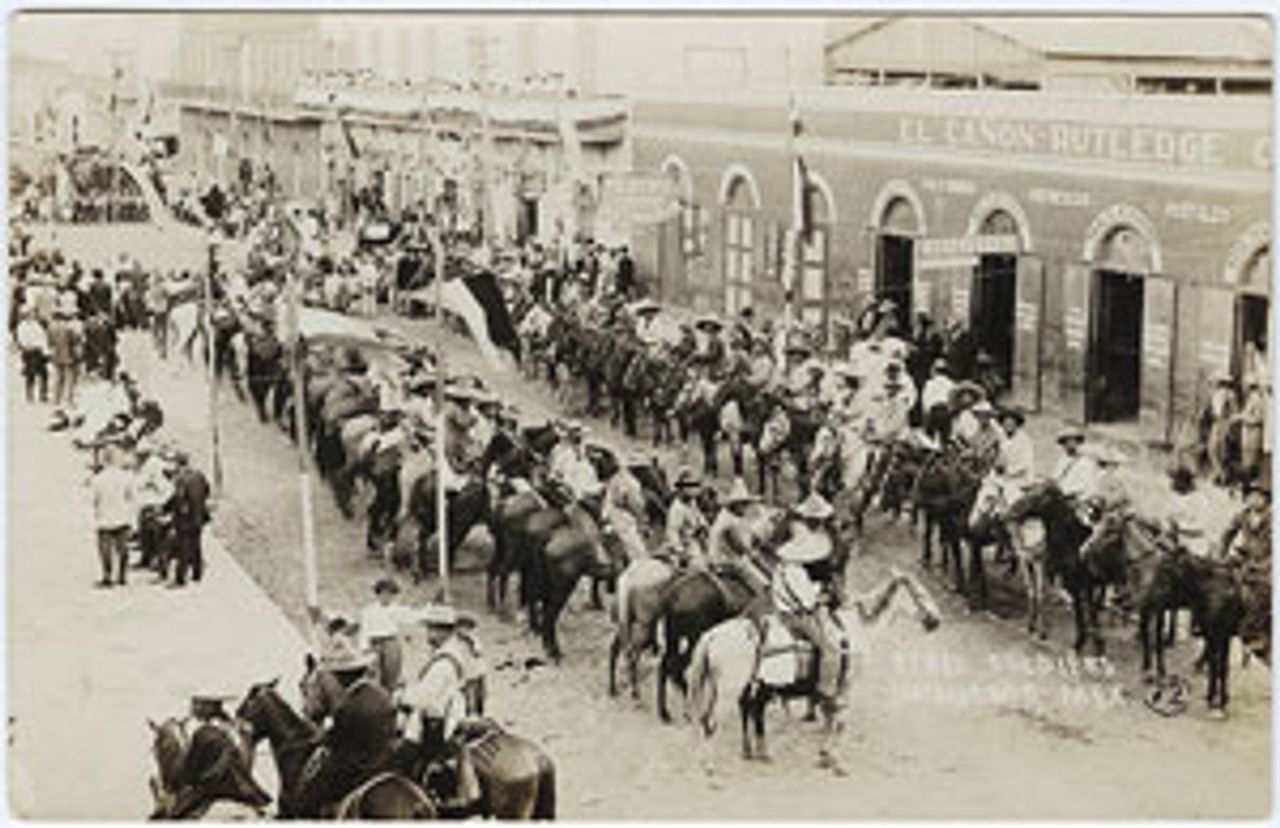This Week in History provides brief synopses of important historical events whose anniversaries fall this week.
25 Years Ago | 50 Years Ago | 75 Years Ago | 100 Years Ago
25 years ago: Democratic governor calls out National Guard on Hormel Strikers
 Hormel strike
Hormel strikeOn January 21, 1986, the Democratic Farmer Labor (DFL) governor of Minnesota, Rudy Perpich, called out 500 National Guardsmen to escort strikebreakers past striking Hormel meatpacking plant workers in the town of Austin, after the company announced it would resume production with non-union workers.
About 1,500 members of Local P-9 of the United Food and Chemical Workers (UFCW) were in their fifth month of striking against management wage-cutting and union-busting. When picketing workers attempted to use their cars to block entrances to the plant, locking themselves in, police and National Guardsmen smashed their windows and dragged them out.
The UCFW national bureaucracy worked assiduously to destroy Local P-9. This included ordering workers to cross roving pickets sent from Austin to other Hormel plants in the Midwest, denying strike relief funds to the workers and their families, and even embezzling funds raised under the “Adopt a P-9 Family” program around the country. In spite of broad support among workers and farmers in Minnesota, union members nationwide, and among Hormel workers throughout the Midwest—who disobeyed the UCFW order to cross picket lines—the AFL-CIO did nothing to assist the Austin workers.
Perpich’s sending out of the National Guard was of enormous significance. The AFL-CIO was just then gearing up for an all-out campaign for the Democratic Party in the 1986 elections. As the Bulletin, a forerunner of the World Socialist Web Site, noted, now “a liberal Democrat from the most liberal state has mobilized the armed forces of the state against the labor movement.” To fight against the corporate assault on wages it was urgently necessary, the newspaper explained, to break with the Democratic Party and build an independent party of the working class.
50 years ago: Lumumba murdered in the Congo
 Patrice Lumumba
Patrice LumumbaOn the night of January 17, 1961, Patrice Lumumba, who had been elected prime minister of the Congo only months earlier, was secretly shot by a firing squad with the approval and collaboration of Belgium and the US. Two of Lumumba’s associates, Maurice Mpolo and Joseph Okito, were also executed.
Lumumba had been removed from his jail in Thysville earlier in the day and transported, bound and gagged, to Katanga province. The firing squad was organized and overseen by Belgian officers, and at least one CIA agent was involved. Weeks later, when doubts surfaced over the official version of Lumumba’s death—that he had been killed by enraged villagers after attempting to escape—the Belgians returned, exhumed the bodies, hacked them up, dissolved them in acid, and kept souvenirs of Lumumba’s teeth and bullets removed from his body.
There is no doubt that Lumumba’s execution was approved, and perhaps ordered, by the US. Years later it came to light that Eisenhower told CIA Director Allen Dulles that Lumumba should be “eliminated.” There are two confirmed US-orchestrated assassination plots, and it was the US that organized the coup carried out by Lumumba’s former ally, Joseph Mobutu. (Prominent Republican Frank Carlucci, working out of the US embassy in the Congo, also secretly doubled as a CIA agent.)
The destruction of Lumumba was the most graphic illustration of the impotence of nationalism in a continent whose national borders had been drawn up by the colonial powers and which remained, even after “liberation,” entirely at the mercy of the world capitalist system.
(See “The unquiet death of Patrice Lumumba”)
75 years ago: Rudyard Kipling, “prophet of British Imperialism,” dies
 Rudyard Kipling
Rudyard KiplingOn January 18, 1936, Rudyard Kipling died at the age of 71 from an ulcer. The English novelist, poet and journalist is remembered for his racialist support of British imperialism. Still today the youngest recipient of the Nobel Prize for Literature, he is widely considered an innovator in the realm of short stories. The tale of Mowgli in The Jungle Book remains immensely popular today.
Born in Bombay, India, Kipling was sent to England by his British parents to be privately educated at the age of five. Later he returned to India to work with his father in Lahore (now in Pakistan) at the ‘Civil & Military Gazette’. Kipling published his first collection of verse in 1886 but his writing career did not take off properly until he and his wife moved to Vermont, in the US, some three years later. There, in the middle of a Vermont winter, Kipling wrote the much loved children’s story The Jungle Book.
In 1899, after returning to the UK, Kipling published his infamous poem “The White Man’s Burden” subtitled “The United States and the Philippines,” which justified the US subjugation of the islands as a noble mission to save “sullen peoples, Half-devil and half-child.”
A great admirer of imperialists like Cecil Rhodes (after whom Rhodesia, now Zimbabwe, was named), Kipling vociferously supported British interests in the Boer War. A year after the outbreak of the First World War he visited the Western Front as a reporter and wrote “France at War”. His support for militarism remained even after his only son John was killed during the Battle of Loos, serving with the Irish Guards.
A virulent opponent of socialism and the Bolshevik regime in Russia, Kipling enthusiastically wrote propaganda on behalf of the British government. In an essay entitled “Rudyard Kipling,” George Orwell expressed his admiration for the subject as a story teller but denounced his ignorant and sentimental vision of British imperialism and called him “the prophet of British Imperialism in its expansionist phase”.
100 years ago: Revolt in Mexico spreads
 Mexican rebels
Mexican rebelsThis week in 1911 the Mexican Revolution intensified, with rebels for the first time winning key battles. The revolution was led in exile by Francisco Madero, and centered largely on democratic demands against the dictatorship of President Porfirio Diaz.
On January 23, Mexican rebels under the command of Col. Ortega defeated a government army at Ojinaga. Of a a Federal force of about 200, only 50 survived. Forces loyal to Diaz lost another key battle to a force of 300 rebels at Casas Grande, leaving “railroads at the mercy of insurgents [and] General Navarro completely cut off,” according to a telegram from Madero’s chief of staff. A telegram from the US Consul in Ciudad Juarez reported that on January 20 a Federal force of 500 had been defeated by a rebel force estimated at 600. On January 18, rail traffic on 1,000 miles of branch line of the Southern Pacific Railway in Mexico was shut down by a strike of Mexican and American train engineers.
Texas was the primary staging ground of the revolution at this stage. Madero was in Texas, as was Abraham González, a leader of the Maderista Junta Revolucionaria Mexicana, who was appointed as the provisional governor of Chihuahua in October 1910.
A member of the Mexican elite whose family had gained great wealth and land during the long rule of Diaz known as “the Porfiriato,” Madero hoped to maintain the power of the ruling elite by offering political reforms, but no significant changes to the social order, such as land reform. However, Madero’s call to arms, the “Plan of San Luis Potosi” issued in November 1910, which declared the recent presidential elections rigged and won by Diaz null and void and himself the president of the provisional Mexican government, awakened a mass movement.
